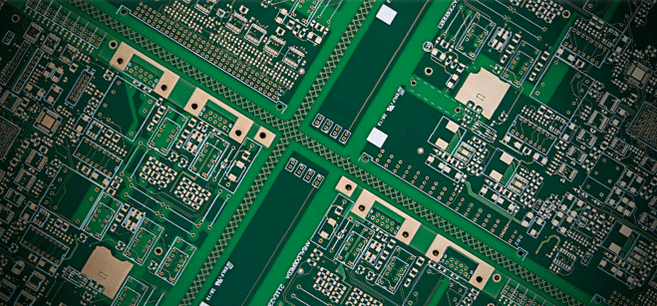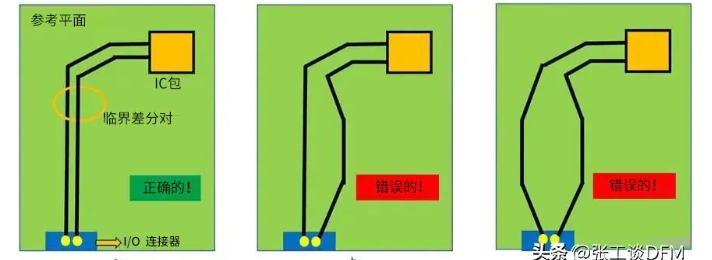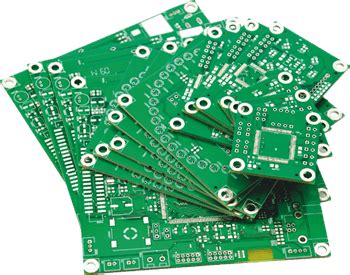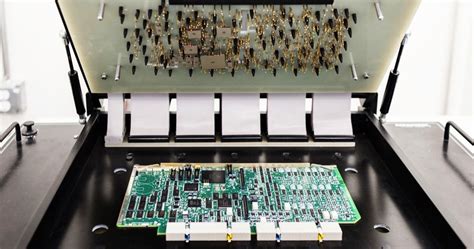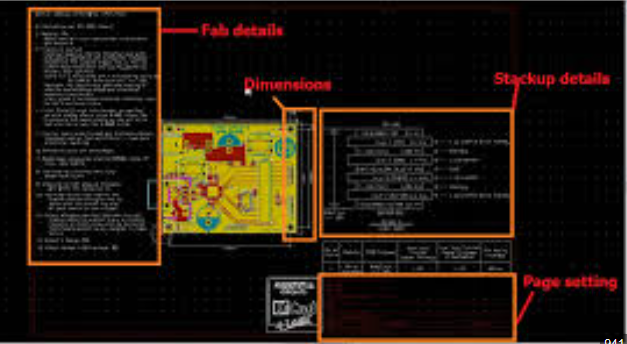Aluminum pcb enclosure
Advantages Of Using Aluminum PCB Enclosures In Electronics
Aluminum PCB enclosures have become increasingly popular in the electronics industry due to their numerous advantages.
One of the primary benefits of using aluminum enclosures is their excellent thermal conductivity.
Electronics generate heat during operation, and efficient heat dissipation is crucial to maintaining optimal performance and longevity. Aluminum, being a highly conductive material, effectively dissipates heat away from sensitive components, thereby reducing the risk of overheating and potential damage. This thermal management capability is particularly beneficial in high-power applications where heat generation is significant.
In addition to thermal conductivity, aluminum enclosures offer superior mechanical strength and durability.
Unlike plastic or other less robust materials, aluminum can withstand significant physical stress and environmental factors. This makes it an ideal choice for applications that require ruggedness and reliability, such as industrial automation, automotive electronics, and outdoor installations.
The inherent strength of aluminum also provides excellent protection against electromagnetic interference (EMI) and radio frequency interference (RFI), which can be detrimental to the performance of electronic devices.
By shielding sensitive components from external electromagnetic fields, aluminum enclosures help ensure the integrity and reliability of electronic systems.
Furthermore, aluminum PCB enclosures are highly customizable, allowing for a wide range of design possibilities.
Manufacturers can easily modify the shape, size, and features of aluminum enclosures to meet specific requirements. This flexibility is particularly advantageous in the development of custom electronic devices, where unique form factors and specialized functionalities are often needed.
The ability to tailor the enclosure design to the specific needs of the application not only enhances the overall performance but also contributes to a more aesthetically pleasing final product.
Another significant advantage of aluminum enclosures is their lightweight nature.
Despite their strength and durability, aluminum enclosures are relatively light compared to other metal options such as steel. This characteristic is especially important in applications where weight is a critical factor, such as in aerospace and portable electronic devices.
The reduced weight of aluminum enclosures can lead to improved energy efficiency, easier handling, and lower transportation costs, all of which are beneficial from both a practical and economic standpoint.
Moreover, aluminum is a highly recyclable material, making it an environmentally friendly choice for PCB enclosures.
The recycling process for aluminum is well-established and requires significantly less energy compared to the production of new aluminum. This not only reduces the environmental impact but also contributes to the conservation of natural resources.
By choosing aluminum enclosures, manufacturers can align with sustainable practices and meet the growing demand for eco-friendly products.
In terms of aesthetics, aluminum enclosures offer a sleek and professional appearance.
The natural metallic finish of aluminum can be further enhanced through various surface treatments such as anodizing, powder coating, or painting.
These finishing options not only improve the visual appeal but also provide additional protection against corrosion and wear.
The combination of functionality and aesthetics makes aluminum enclosures an attractive choice for consumer electronics, where both performance and appearance are important considerations.
In conclusion, the advantages of using aluminum PCB enclosures in electronics are manifold. Their excellent thermal conductivity, mechanical strength, and durability make them suitable for a wide range of applications.
The customizability, lightweight nature, and environmental benefits further enhance their appeal. Additionally, the aesthetic qualities of aluminum enclosures contribute to the overall value of electronic products.
As the demand for high-performance and reliable electronic devices continues to grow, aluminum PCB enclosures are likely to remain a preferred choice among manufacturers and designers.

How To Choose The Right Aluminum PCB Enclosure For Your Project
Selecting the appropriate aluminum PCB enclosure for your project is a critical decision that can significantly impact the performance, durability, and overall success of your electronic device.
The process involves considering various factors, each of which plays a crucial role in ensuring that the enclosure meets the specific needs of your application.
To begin with, it is essential to understand the primary function of an aluminum PCB enclosure. These enclosures are designed to protect printed circuit boards (PCBs) from environmental factors such as dust, moisture, and mechanical damage. Additionally, they provide a means of heat dissipation, which is vital for maintaining the optimal operating temperature of electronic components.
One of the first considerations when choosing an aluminum PCB enclosure is the size and shape of your PCB.
The enclosure must be large enough to accommodate the PCB and any additional components, such as connectors and cables, without causing any interference. It is advisable to measure the dimensions of your PCB accurately and compare them with the internal dimensions of the enclosure. Furthermore, it is important to consider the mounting options available. Some enclosures come with pre-drilled holes or mounting brackets, which can simplify the installation process.
Another critical factor to consider is the level of protection required for your application.
Aluminum enclosures are available in various grades, each offering different levels of protection against environmental factors. For instance, if your project will be exposed to harsh outdoor conditions, you may need an enclosure with a high Ingress Protection (IP) rating.
An IP67-rated enclosure, for example, provides complete protection against dust and can withstand immersion in water up to a certain depth. On the other hand, if your project will be used in a controlled indoor environment, a lower IP rating may suffice.
Thermal management is another important aspect to consider when selecting an aluminum PCB enclosure.
Electronic components generate heat during operation, and if this heat is not dissipated effectively, it can lead to overheating and potential failure of the device. Aluminum is an excellent material for heat dissipation due to its high thermal conductivity.
However, the design of the enclosure also plays a significant role in thermal management. Enclosures with built-in heat sinks or ventilation slots can enhance heat dissipation and help maintain the optimal operating temperature of your device.
In addition to protection and thermal management, the aesthetic appeal of the enclosure may also be a consideration, especially if the device will be visible to end-users.
Aluminum enclosures are available in various finishes, such as anodized, powder-coated, or brushed, which can enhance the appearance of your device. Moreover, some manufacturers offer customization options, allowing you to add logos, labels, or other branding elements to the enclosure.
Cost is another factor that cannot be overlooked. While it is important to choose an enclosure that meets all your technical requirements, it is also essential to consider your budget.
Aluminum enclosures are generally more expensive than plastic ones, but they offer superior protection and durability. It is important to strike a balance between cost and quality to ensure that you get the best value for your investment.
In conclusion, choosing the right aluminum PCB enclosure for your project involves careful consideration of various factors, including size, protection level, thermal management, aesthetic appeal, and cost. By taking the time to evaluate these aspects, you can ensure that the enclosure you select will provide the necessary protection and functionality for your electronic device, ultimately contributing to the success of your project.
Customizing Aluminum PCB Enclosures For Specific Applications
Customizing aluminum PCB enclosures for specific applications is a critical aspect of modern electronics design, offering both functional and aesthetic benefits. Aluminum, known for its excellent thermal conductivity, durability, and lightweight properties, is an ideal material for housing printed circuit boards (PCBs).
The customization of these enclosures ensures that they meet the unique requirements of various applications, ranging from consumer electronics to industrial machinery.
One of the primary considerations in customizing aluminum PCB enclosures is the thermal management.
Effective heat dissipation is crucial for maintaining the performance and longevity of electronic components. Aluminum’s high thermal conductivity allows it to efficiently transfer heat away from sensitive components, thereby preventing overheating. Customization can include the integration of heat sinks, ventilation slots, or even the application of thermal interface materials to enhance heat dissipation.
These modifications are particularly important in high-power applications, such as power supplies and LED lighting systems, where excessive heat can lead to component failure.
In addition to thermal management, the mechanical protection of PCBs is another vital factor.
Aluminum enclosures provide robust protection against physical damage, electromagnetic interference (EMI), and environmental factors such as dust and moisture. Customizing the enclosure to fit the specific dimensions and layout of the PCB ensures a secure fit, minimizing the risk of damage during operation.
Furthermore, the addition of gaskets and seals can enhance the enclosure’s resistance to environmental factors, making it suitable for use in harsh conditions, such as outdoor installations or industrial environments.
Aesthetics also play a significant role in the customization of aluminum PCB enclosures.
The appearance of the enclosure can be tailored to match the branding and design language of the end product. This can be achieved through various finishing techniques, such as anodizing, powder coating, or painting.
Anodizing, for instance, not only enhances the visual appeal of the enclosure but also improves its corrosion resistance. Custom logos, labels, and other markings can be added through laser engraving or silk-screen printing, providing a professional and cohesive look.
Moreover, the functionality of the enclosure can be enhanced through the inclusion of custom features such as mounting brackets, cable glands, and connectors.
These additions facilitate the integration of the enclosure into the larger system, ensuring ease of installation and maintenance. For example, mounting brackets can be designed to allow for easy attachment to walls or other surfaces, while cable glands provide secure entry points for wiring, preventing strain and potential damage.
The process of customizing aluminum PCB enclosures often involves close collaboration between the design team and the manufacturer. This collaboration ensures that the specific requirements of the application are fully understood and met.
Advanced manufacturing techniques, such as CNC machining and 3D printing, enable the production of highly precise and complex designs. These techniques allow for rapid prototyping and iterative testing, ensuring that the final product meets all performance and aesthetic criteria.
In conclusion, the customization of aluminum PCB enclosures is a multifaceted process that addresses thermal management, mechanical protection, aesthetics, and functionality. By tailoring the enclosure to the specific needs of the application, designers can enhance the performance, durability, and visual appeal of their electronic products. The collaboration between design teams and manufacturers, coupled with advanced manufacturing techniques, ensures that these customized enclosures meet the highest standards of quality and reliability.

Comparing Aluminum PCB Enclosures To Other Materials
When selecting an enclosure for printed circuit boards (PCBs), the choice of material is a critical factor that can significantly impact the performance, durability, and overall functionality of the electronic device.
Among the various materials available, aluminum stands out as a popular option due to its unique properties. Comparing aluminum PCB enclosures to those made from other materials, such as plastic and steel, reveals several advantages and considerations that are essential for making an informed decision.
Aluminum PCB enclosures offer superior thermal conductivity, which is a crucial attribute for electronic devices that generate significant heat
.Unlike plastic enclosures, which tend to insulate heat, aluminum effectively dissipates thermal energy, thereby reducing the risk of overheating and enhancing the longevity of the components housed within. This thermal management capability is particularly beneficial for high-power applications and environments where temperature control is paramount.
In addition to thermal conductivity, aluminum enclosures provide excellent electromagnetic interference (EMI) shielding.
EMI can disrupt the performance of electronic devices, leading to malfunctions or data loss. Aluminum’s conductive properties enable it to act as a barrier against electromagnetic waves, thereby protecting sensitive electronic components from external interference. While steel enclosures also offer good EMI shielding, aluminum is often preferred due to its lighter weight, which simplifies handling and installation.
Durability is another significant factor where aluminum enclosures excel.
Aluminum is inherently resistant to corrosion, making it suitable for use in harsh environments where moisture and other corrosive elements are present. This resistance to corrosion ensures that the enclosure maintains its structural integrity and appearance over time, unlike plastic enclosures, which can degrade and become brittle when exposed to UV light and other environmental factors. Steel enclosures, although durable, are prone to rust if not properly treated or coated, adding to maintenance requirements.
The weight of the enclosure material is a critical consideration, especially for portable or handheld devices
. Aluminum’s lightweight nature offers a distinct advantage over steel, which is considerably heavier. This reduction in weight can lead to improved ergonomics and ease of transport, making aluminum enclosures an ideal choice for applications where mobility is essential. Plastic enclosures, while also lightweight, do not offer the same level of strength and protection as aluminum, potentially compromising the safety of the enclosed electronics.
From a manufacturing perspective, aluminum is highly versatile and can be easily machined, extruded, or cast into complex shapes and designs.
This flexibility allows for the creation of custom enclosures tailored to specific requirements, providing both functional and aesthetic benefits. In contrast, plastic enclosures may require more complex molding processes, and steel enclosures can be more challenging to work with due to their hardness and weight.
Cost is an important factor to consider when choosing an enclosure material.
While aluminum enclosures may be more expensive than plastic options, the long-term benefits in terms of durability, thermal management, and EMI shielding often justify the initial investment. Steel enclosures, although potentially less expensive than aluminum, may incur additional costs related to corrosion protection and increased weight.
In conclusion, aluminum PCB enclosures offer a compelling combination of thermal conductivity, EMI shielding, durability, lightweight properties, and manufacturing versatility. These advantages make aluminum a preferred choice for many electronic applications, particularly those requiring robust performance in challenging environments. While plastic and steel enclosures have their own merits, the unique benefits of aluminum often make it the superior material for ensuring the reliability and longevity of electronic devices.

